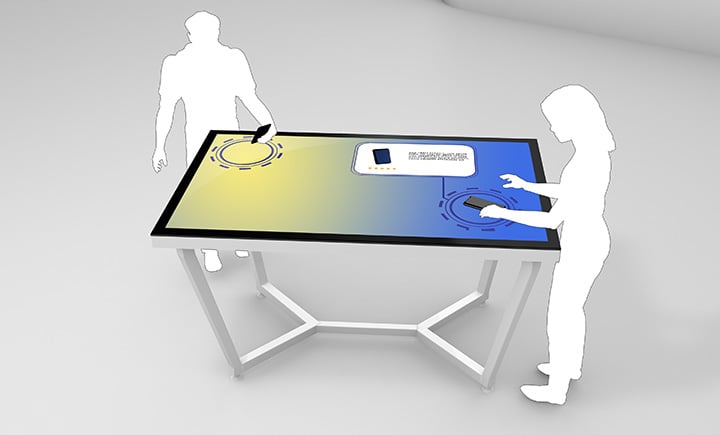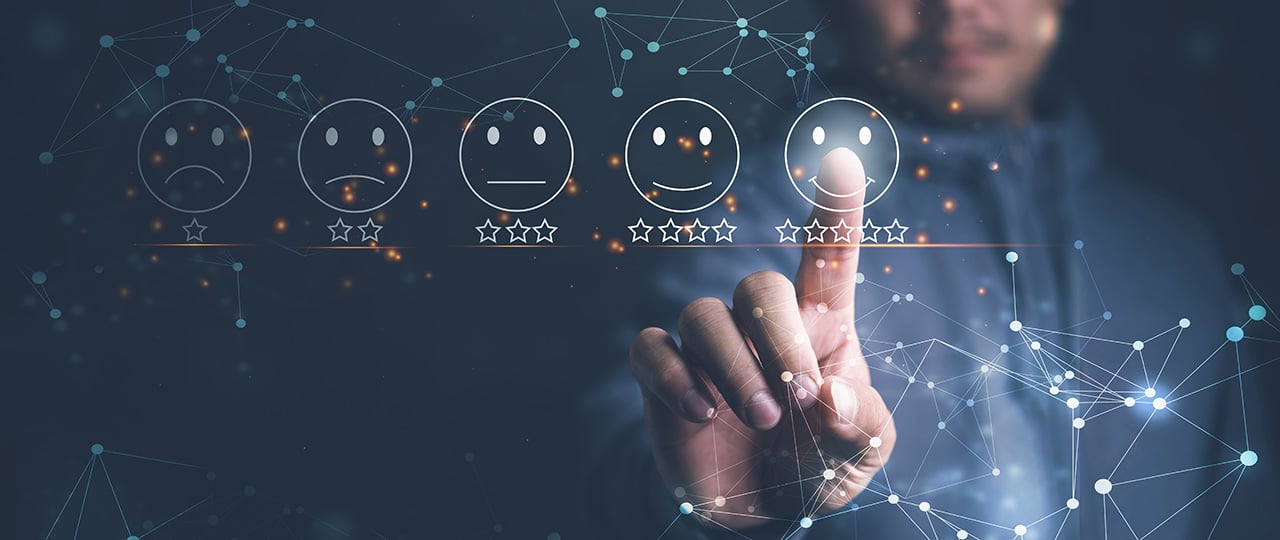Customer experience continues its reign as a top priority for both customers and retailers. A decade ago, customer experience was poised to become the key differentiator for brands, ahead of price and product[1]. Today, great customer experience is indeed top of the agenda for businesses and retailers, and high on the wish list for customers.

But expectations trump reality. The gap between customer expectations and actual experiences is widening. More than half of customers say that customer experience at most companies needs improvement.
As brick and mortar retailers grapple to reinvent themselves in the post-pandemic era of e-commerce and mobile shopping, in-store customer experience has never been more important.
Keeping Up with Customer Expectations
Customer preference for speed, convenience and consistency has deepened in recent years. The surge in online shopping, fragmentation of customer touch points and expansion of communication channels has heightened customers' desire for a smooth, seamless experience.
Customers are channel agnostic when it comes to their expectations - they demand companies to deliver consistent experience regardless of how they are interacting with your company - be it online, on mobile, on social media or in-store.

As customers flock back to in-store shopping, the overall sensory experience, ease of navigation and the ability to conduct pre-purchase research in-stores will shape their overall experience.
4 Ways that Customer Experience Drives Retail Success
Customer experience is the sum of all interactions a customer has with a brand across every touch point and at every stage of the customer journey - from discovery and purchase to after sales and repeat purchase.
A good customer experience is non-negotiable. It drives a customer's decision to make a purchase, their loyalty and their advocacy of the brand. For many brands, great customer experience is what differentiates the brand from its competitors.

1. Boost Sales and Revenue
Customer experience can be a tilting factor in whether a customer makes a purchase or not. Good customer experience is so delightful, that customers are actually willing to pay more for a better experience.
2. Drive Loyalty and Retain Customers
Great customer experience is as influential when it comes to repeat purchases. Happy customers are more likely to make repeat purchases, while dissatisfied customers are more likely to walk away.
3. Build Brand Advocacy
Customer experience greatly influences the type of word-of-mouth generated around a brand. Customers who have had a positive experience will talk about it with their networks. On the flip side, customers who have a had a negative experience tend to share their experience with larger numbers of people.
4. Future-proof the Retail Experience
Customer experience plays a leading role in helping brick and mortar stores differentiate themselves from e-commerce platforms and apps. By creating unique and deeply satisfying experiences, retailers create a compelling reason for customers to break away from the monotony of online shopping and visit stores for their shopping needs. In-store shopping is great for business. Numerous studies show that customers who visit stores are more likely to make additional, unplanned purchases.
Interactive Technologies Elevate Customer Experience
Retailers are increasingly turning to digital and interactive technologies to enrich the in-store customer experience - by making it more engaging, convenient, educational or entertaining depending on specific customer needs. Interactive technologies offer a diverse range of solutions for companies of all industries. Below are three popular and proven technologies that add measurable value and a "Wow"-factor to the retail experience.
1. Interactive Self-Order Terminals

Interactive touchscreens empower customers with the ability to control the digital experience as per their own needs and interests. Large touchscreens can be deployed in stores to create self-order terminals where customers can browse through the store’s inventory, research products in-depth, explore rich multimedia content, find answers to their questions and even complete the checkout process.
Interactive self-order terminals are just as beneficial for store owners, by helping retailers:
To offer the best experience, these types of interactive solutions require touchscreen software and retail hardware addons such as product scanners, order bill printers or payment terminals. Companies such as eyefactive offer both hardware and software, thereby simplifying the planning and execution process for retailers greatly.
2. Omni-Channel Solutions

Interactive technologies can also be linked to customer's user accounts or synced with their mobile phones to deliver a seamless omni-channel experience in-store. As an example, customers can discover products on large-scale touchscreens, add them to cart and then transfer their cart to their mobile phone to complete the checkout privately and securely on their own device.
3. Multitouch Tables with Object Recognition

In addition to interactive screens, customers can also interact with smart products resulting in a unique sensory experience that revolves around the product. The smart product would be tagged with a simple marker chip. When placed on a multitouch table, the smart product would instantly activate the touchscreen and enable the customer to learn more about the product, visualise it in action, compare it with other products placed on the screen and so on. Retailers can choose from a range of different touchscreen software or touchscreen apps to decide on which features to include to meet their customer's specific needs.
Summary
Customer experience has skyrocketed in importance over the past decade and the trend appears to be here to stay. It is no surprise that an ever-expanding number of retailers are prioritising investments in digitalisation, omni-channel experiences and interactive technologies.
The possibilities are endless when it comes to interactive technologies. These technologies are modern, fun and versatile. They can be used to create innovative, delightful and meaningful customer experiences across different verticals such as retail stores, museums, restaurants, banks, waiting rooms and more.
Customers have made it loud and clear with their voice and wallet that they demand good customer experience. Companies that deliver on this will find that customer experience can become the best competitive advantage they have and the best predictor of long-term success.
As the economy recovers from the unprecedented impact of the COVID-19 pandemic, and customer spending bounces back, the time to build incredible customer experiences with interactive signage solutions is now.

About the Author
Matthias Woggon is CEO & Co-founder of eyefactive GmbH. A pioneer in interactive signage, eyefactive combines interactive touchscreen systems, software and technologies like object recognition to offer innovative solutions for businesses. Furthermore, clients and partners can create ready to use apps with individual content and designs in the world's first ever app store for professional large-scale touchscreens.


